 |
|
||||||||||
|
|
|||||||||||
Visionaries of Science:an Inescapable Forward-Moving LogicIntroductionWhen Francis Crick was young, he worried that all the important discoveries in science would be made before he grew up. He eventually won the Nobel Prize for his work with James Watson and others in describing the molecular structure of DNA. This turning point in the history of biochemistry affects every aspect of our lives from paternity issues, to trial evidence, to gene therapies. A century before Crick and his colleagues revealed the secrets of life’s basic structures, another famous scientist made discoveries that still save lives today. Taking a diversified approach, this brilliant French researcher uncovered knowledge so fundamental that in the 21st century, most of us instinctively understand it. You may have heard of the technique that bears his name: Pasteurization, the process of using heat for sterilization. Louis Pasteur (1822 -1895)
His list of achievements is long. How did Pasteur do it? “In the field of observation,” he once said, “chance favors the prepared mind.” He had a broad education, and his curiosity drove him to acquire more knowledge. He also exhibited a trait that he shares with other brilliant and successful scientists. He once said, “Let me tell you the secret that has led me to my goal. My strength lies solely in my tenacity.” Crystallography
One of Pasteur’s ideas was that compounds showing asymmetry most likely function in living systems. He was on the right track – we know, for example, that the amino acids found in proteins exist only in the L conformation (e.g., L-tryptophan), and not in the D conformation. A seemingly very small difference, but in practice a very critical one. Fermentation
Pasteur broke out the microscope and proved that in normal beer or wine, yeast cells looked healthy and budding. But in soured beer or wine, he saw small rod-like organisms. He also demonstrated that fermentation was not just breaking sugar down into alcohol, water, and carbon dioxide; other compounds were also produced during fermentation. He examined light passed through the liquids, as he had in his crystallography work, and he found that the patterns were asymmetric. Pasteur concluded – and proved – that living organisms (yeast) were responsible for successful fermentation, and that the rod-like organisms were connected to soured brews. His discovery solved not only a scientific mystery, but also addressed a serious economic problem in a country that relied heavily on wine production. Germ Theory of DiseaseBut what were those small, rod-like organisms? In the late 19th century, most medical doctors agreed that some diseases might be caused by living invaders. But few agreed that afflictions like scarlet fever or smallpox were the result of such invasions. After his work with fermentation, Pasteur was convinced that small organisms could be the agents of disease, growing abundantly in hospitals where sanitary practices were dismal. He showed that cleaning and heating hands, surgical instruments and bandages would greatly cut down on the number of infections and fatalities in hospitals. And the situation was bad. According to a Pasteur biographer, in a little over a month during 1856, 64 women of the 347 who gave birth in a Paris hospital died because of childbed fever, an avoidable infection. Eventually, the infection spread and killed almost all the women. Pasteur felt strongly that sterilization techniques would prevent such tragedies. He gave a famous speech at the Academy of Medicine, cautioning doctors that, “This water, this sponge, this lint with which you wash or cover a wound, may deposit germs which have the power of multiplying with great rapidity within the tissue . . . .” He recommended that all surgeons clean their hands and instruments carefully and heat all bandages, sponges, and other items to sterilize them. It was a simple solution, but in identifying the problem, Pasteur followed his own famous credo that chance, does indeed, favor the prepared mind. A few individuals still make giant contributions in modern-day science. Stanley Prusiner, who won the 1997 Nobel Prize in Physiology or Medicine, with a relatively small research team uncovered the existence of prions, “proteinaceous infectious particles.” These particles can cause disorders such as Kreuzfeldt-Jakob’s (Mad Cow) disease. They are an entirely new class of infectious particles, and join bacteria, viruses, fungi and parasites as infectious agents. For more information on prions, visit the Prions Cutting Edge article. Francis Crick (1916–)Modern biochemical science has produced relatively few individual heroes. One of our most famous modern scientists is Francis Crick, the co-discoverer of DNA structure who worried as a child that science would leave no secrets for him to uncover. Not only did he gather together disparate pieces of information to identify the molecular structure of DNA, he also deduced some important elements involved in making proteins. The secret of life
Incidentally, one of the most famous discoveries in modern science was published in Nature as a short, one-page paper that is a model of understatement. At one point, the authors (Watson and Crick) dryly observe that “it has not escaped our notice that the specific pairing we have postulated immediately suggests a possible copying mechanism for the genetic material.” Not only did Watson and Crick uncover the probable molecular structure of a fundamental molecule, they also demonstrated how that molecule copies itself, a crucial factor in proving their inferred model. The Adaptor HypothesisBut Crick did not stop with DNA structure. He went on to examine how proteins are made, looking at the biochemistry of translation. Our cells make protein by starting with DNA, making RNA, then translating the RNA into strings of amino acids that are the building blocks of proteins. One sticking point among geneticists and biochemists was how a three-nucleotide sequence (AAG, for example) translates into an amino acid (lysine, for example). Using his knowledge of hydrogen bonding, Crick proposed that every amino acid has its own adaptor that “reads” the nucleotide sequence and attaches the right amino acid. Crick never published this hypothesis in a journal, although he distributed it to many colleagues. He referred to his theory as his “most influential unpublished paper.” But his hypothesis proved true. Each amino acid has its own adaptor -- called tRNA -- that helps identify the proper nucleotide sequence. tRNA works as a sort of interpreter and translator between amino acids and the nucleic acids that code for them. You will learn about tRNA and translation in more depth later. The Wobble HypothesisCrick also recognized that the adaptors were not exact. For an adaptor to work, only the first two nucleotides in a the three-nucleotide code must be exactly right; the third nucleotide can “wobble” or be nonspecific. The Astonishing HypothesisCrick still enjoys a mystery. One of his current pursuits is the underpinnings of thought. Crick proposes that consciousness is based solely in neural mechanisms. He writes in his book, An Astonishing Hypothesis, that “your joys and your sorrows, your memories and your ambitions, your sense of personal identity and free will, are in fact no more than the behavior of a vast assembly of nerve cells and their associated molecules. As Lewis Carroll's Alice might have phrased: ‘You're nothing but a pack of neurons.’” PanspermiaBut his ideas don’t stop with the mysteries of the mind on planet Earth. Crick has also formulated some theories about the origins of life on earth, and his ideas don’t begin with a frothing primordial soup. He argues that the origin of life happened so quickly – between 4.6 and 3.6 billion years ago – that it could not have occurred through natural evolutionary processes. He postulates that extraterrestrials introduced organic molecules to earth, providing the ingredients to build life. This model falls under the umbrella of panspermia, a theory that the beginnings of life on earth came from outer space. Crick’s model is “Directed Panspermia.” Some proponents of panspermia theorize that bacterial spores arrived on earth by accident. Crick proposes that interstellar distances are too great for such accidents, and that our earthly origins arrived via robot craft sent by extraterrestrials. Forward-moving logicScientists today stand divided, categorized as zoologists or botanists or biochemists. But as the careers of Pasteur and Crick demonstrate, pigeonholing may simply stifle. It is the diversification of talent and following where the road leads, even if it moves from physics to chemistry to biology, that may truly prepare the mind for the chances that arise. |
 |
 |
Copyright 2006, John Wiley & Sons Publishers, Inc. |
 |
 |
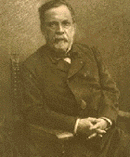 Louis Pasteur’s contributions to science did not end when he discovered that heat kills unseen microbes in food; he also made discoveries in the fields of chemistry, physics, and biology that provided a cornerstone for a century of fast-moving scientific advances.
Louis Pasteur’s contributions to science did not end when he discovered that heat kills unseen microbes in food; he also made discoveries in the fields of chemistry, physics, and biology that provided a cornerstone for a century of fast-moving scientific advances.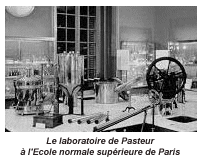 His tenacity – his unwillingness to let go of an idea – and his comprehensive education led him to a number of fundamental observations. Pasteur first focused on physics and chemistry and studied crystallography – the structure and composition of crystallized compounds. His first crystallography experiments uncovered a startling fact – a compound that appears to be composed of uniformly identical crystals can exhibit different properties when these supposedly identical crystals are separated.
His tenacity – his unwillingness to let go of an idea – and his comprehensive education led him to a number of fundamental observations. Pasteur first focused on physics and chemistry and studied crystallography – the structure and composition of crystallized compounds. His first crystallography experiments uncovered a startling fact – a compound that appears to be composed of uniformly identical crystals can exhibit different properties when these supposedly identical crystals are separated.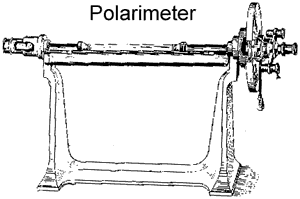 Pasteur hand-separated crystals that appeared to have a “left-handed” conformation from those that seemed to have a “right-handed” conformation. Using a polarimeter, he demonstrated that when the crystals are combined in solution, they have no effect on the path of polarized light, but when the left-handed and right-handed crystals were placed in two separate solutions, they each affected the path of polarized light in opposite ways.
Pasteur hand-separated crystals that appeared to have a “left-handed” conformation from those that seemed to have a “right-handed” conformation. Using a polarimeter, he demonstrated that when the crystals are combined in solution, they have no effect on the path of polarized light, but when the left-handed and right-handed crystals were placed in two separate solutions, they each affected the path of polarized light in opposite ways.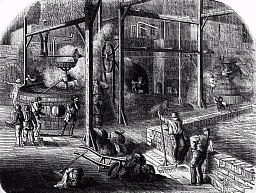 Not content with founding a whole new field of study (stereochemistry), Pasteur’s next big discovery was the process of fermentation. The accepted idea was that fermentation was simply a breakdown of sugar into basic components, including alcohol. But sometimes, instead of drinkable beer or wine, brewers and vintners would get soured liquids. A winemaker in northern France, frustrated about his soured product, enlisted Pasteur’s help to find out how the contamination occurred.
Not content with founding a whole new field of study (stereochemistry), Pasteur’s next big discovery was the process of fermentation. The accepted idea was that fermentation was simply a breakdown of sugar into basic components, including alcohol. But sometimes, instead of drinkable beer or wine, brewers and vintners would get soured liquids. A winemaker in northern France, frustrated about his soured product, enlisted Pasteur’s help to find out how the contamination occurred.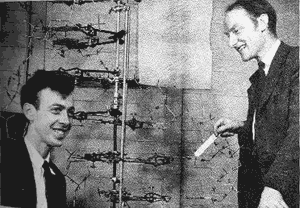 Like Pasteur, Crick (right) also began his career as a physicist and chemist, even using crystallography to determine the X-ray diffraction of a helix, a key factor in the discovery of DNA’s structure. He worked with other researchers, including James Watson
Like Pasteur, Crick (right) also began his career as a physicist and chemist, even using crystallography to determine the X-ray diffraction of a helix, a key factor in the discovery of DNA’s structure. He worked with other researchers, including James Watson